| 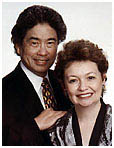 Effective
Teaching...
Effective
Teaching...
by Harry and Rosemary
Wong
September
2001
How a Good
University Can Help You
Sarah Jones left her home in San Jose, California in search of the best university to prepare her for being a teacher and went to Western Kentucky University in Bowling Green. She had heard that they had an excellent school of education. This advice even came from an official in a California university. Today, she raves about her experience at Western Kentucky University (www.wku.edu) and whole-heartedly recommends the school for anyone planning to be an effective teacher.
She thanks her professors, Dr. Boulware, Dr. Daniel, and Mrs. Mikovich, who taught the classroom management course, which is required before student teaching. In this class the students were required to develop a First Day of School Action Plan. One aspect of this First Day of School Action Plan was to develop a set of procedures and routines to be used in managing a classroom. From the very beginning of our writings for this column we have stressed the importance of classroom management.
Classroom management encompasses everything.
If you are not managing the classroom,
then your curriculum will not even matter.
We Never Hear From Them Again
Each month we receive letters desperately seeking an answer to the "What do I do? question.
The parents are not home when I call.
The students don't come to class.
They don't turn in the assignments.
They talk when they are supposed to be working.
I find them disrespectful of me.
What do I do to this one student who..."
And we answer all of them the same way. We ask to please send us a list of the classroom management procedures distributed to the students on the first days of school, so that we can address the problems more specifically. We, sometimes, even ask if the person has read the book, The First Days of School, or all of the other columns we have written since June 2000 for the Gazette. Invariably, we never hear from the person again.
We truly sympathize with all of you who are struggling with the challenges of the disorganized classroom. Classroom management could easily have been taught in a university class or in a school district's new teacher induction program. But since many of you did not get either, we get your pleas for help.
To answer your question of what to do, please understand that you don't do anything to anyone. You wouldn't like it if someone did something to you. Thus, it is incorrect to threaten a student by saying, "You do this one more time, and this is what I will do to you!" The ineffective teacher, perhaps in frustration, is always blaming others and wants to do something to a student, to whom they perceive is the problem.
The true core of the problem is really the teacher who has set up a classroom where the students have no ownership and no responsibility. That's why students walk into class, even late, and slump into a chair waiting for the teacher to announce what is going to happen. And some teachers don't even announce what is going to happen until 10 to 15 minutes of class time have gone. The teacher is usually too busy taking care of administrative tasks that are not the priority when class time begins. (See The First Days of School, page 121.)
Your first priority when the class starts
is to get the students to work.
She Was Ready the First Day of Her First Year
Sarah Jones will live in our daughter's heart as the teacher who made a difference in her life. Ms. Jones is a perfect combination of structure and nurture.
Karen and Jerry Lovejoy
Parents of Kaelie Lovejoy
As a result of her work at Western Kentucky University, Sarah Jones was prepared for her very first day in her first year as a teacher. Her principal, Judy Morasci of Milpitas Christian School, says,
Sarah Jones came into her first year of teaching with all of the skills and maturity of a veteran educator. Because of her expertise in providing organized routines and procedures, she creates an atmosphere of mutual respect and compassion. This atmosphere is an ideal learning environment for her students and a rich, supportive experience for the families of her students as well. Her classroom management skill allows her to establish and maintain an environment where children are eager to learn under her encouraging guidance. She is an outstanding example of professional excellence in the field of education.
We have had the pleasure of observing Sarah Jones several times in her classroom. Because of her organizational skills, well beyond that of the normal beginning teacher, we found a classroom that was highly predictable. Students like consistency; they do not want surprises accompanied by yelling and screaming. As the parent and principal correctly described her classroom, it is one of nurturing and compassion, which is only possible after the classroom has structure.
Sarah Jones' Classroom Procedures
Sarah Jones had procedures and routines ready for her first day of school. She developed these while training at Western Kentucky University.
Classroom Procedures
Entering the Classroom
Students enter the classroom quietly and calmly. If coming in at the beginning of the day, they put their belongings away quickly and do the morning routine. If it is at another part of the day, the students come in and have a seat in their chairs.
End of Class Dismissal
I dismiss the class not the bell. Students are dismissed when called upon, either individually or by groups.
Bell Work
Each morning there is a "bell work" assignment on the board or overhead projector. Students enter the classroom and get started on the assignment. The assignment is turned in or corrected verbally as a class. When the assignment is completed, students write in their journals or read. Every morning the students write the daily entry from the board into their agenda. This is always a part of their "bell work" assignment.
Quieting the Class
- The teacher raising her hand quiets the class. The teacher doesn't say anything or get upset, but patiently waits with her hand up until the class is quiet.
- Another method used is counting to five and each number symbolizing an action.
"1- I need your eyes on me; 2- I need your ears; 3- You should all be sitting; 4- Sit up straight; 5- Five Star (Give Me Five) students ready to begin."
- The teacher ringing the small bell on the desk quiets the class. The bell signals the class to be quiet and listen.
- A clapping pattern started by the teacher is also done. The teacher makes a short clapping pattern and the students repeat the pattern. Once the pattern has been repeated, the room becomes quiet.
Taking Class Roll
A student is assigned to be the "Attendance Keeper." The student looks around the classroom once all children have been seated and then records who is absent by placing an "Absent" folder on that person's desk. I can then glance around the room quickly and know who is absent by seeing where the folders are placed.
Class Motto
Every morning the class says the classroom motto, which is posted on the wall in the front of the room. Everyone stands for this and says the motto together to start off our day.
Collecting Seat Work
Work is collected according to the configuration of the desks. If the desks are arranged in rows, passing the papers across their row collects students' seatwork. They are instructed to place their paper on top of their neighbor's desk and then that neighbor picks it up and continues the passing process. When all of the papers are received at the end of the row, the student, whose job is to collect papers, brings all of the papers to the front of the room and puts them in the finished work basket. (See https://teachers.net/wong/DEC00)
Students' seated at tables collect their work by placing their finished papers in the middle of their table. The student, whose job is to collect papers, walks around the room and picks up each table's stack of papers and puts them in the finished work basket at the front of the room.
Turning in Work
There are two baskets placed in the front of the room. One basket is labeled "class work" and the other is labeled "homework." Whatever type of assignment they have to turn in, the child places the work in the appropriate basket.
Notes From Home
Students are to place any notes from home in the basket, which says "Notes From Home."
Restroom Breaks
Going to Lunch
Students make two lines by the outside door, one for "home lunches" and one for "school lunches." The students buying their lunches line up in alphabetical order. Students are picked up after lunch on the blacktop as they wait in the area of their classroom number. (Numbers are painted on the blacktop.)
Cafeteria
Students follow the cafeteria procedures as well as the classroom rules. Students clean up their sitting area after they are done. Students should be on their best behavior by using "Please" and Thank You."
Working in Cooperative Groups
Students are placed in teacher chosen groups at all times. They are reminded of the procedure for Support Groups.
- You are responsible for your own work.
- You are to ask a "support buddy" for help if you have a question.
- You must help if you are asked for help.
- You may ask for help from the teacher when the group agrees on the same question.
Transportation
Students follow the school's rules and classroom's procedures even when riding in vehicles on school outings. When walking to or from the bus or car, the procedures for the halls are followed. Students stay seated while on the bus or in the car and respect the property. Seat belts are worn at all times. A low voice is always used in the vehicle. There is no eating in the car or bus unless the driver says it's ok.
Picking Monitors
Students are chosen to do things in class by picking a Popsicle stick from the can labeled "Pick a Stick." Each student's name is written on the bottom end of a Popsicle stick and the sticks are all placed in a can. The teacher draws a stick in order to pick students for a variety of things.
Pinning Up Art Papers
Students pin up their art work on the clothesline in the front of the classroom. Whenever an activity that requires glue or paint is completed, the clothesline is used to hang the paper to dry. At the end of the day the students remove their dried papers and stack them in the "Class Work" basket.
Keeping the Noise-Level Down
A traffic signal is used to remind the students of the noise level for the classroom. A large cutout stoplight is hung in the front of the room with three black circles and a hook on each circle. Green, yellow, and red circles have been cut to fit over the black circle. The red circle is hung from its hook to indicate silent time, the yellow circle for whisper time, and the green circle for talk freely time.
Classical music is played during class time. Children keep that noise levels lower than the sound of the music.
Sending Notes Home
Notes to go home to parents at the end of the day are placed in the cubbies. This is the cubby keeper's job to do. Students are responsible for sharing all of the notes with parents each evening.
When a Student Is Absent
When a student is absent, an absent folder with a yellow sticker is placed on that student's desk. All papers are passed out during class or any notes that need to go home are placed inside the folder. When the student comes back to school he/she knows to complete the missed work in the yellow folder. The absent work is placed on the shelf in the front office of the school for parents to pick up after 3:00pm.
Changing Groups/Transitions
The teacher gives a verbal announcement of five minutes left before changing centers, lessons, activities, etc. When it is time to change, a variety of methods are used.
- Play music
- Snap/clap rhythm pattern led by teacher
- A bell is rung
Students know what these different signals mean and make the change quickly and quietly.
If the Teacher Is Out of the Classroom
Students remain on task while the teacher is out of the room. Classroom rules and procedures are followed as they continue their work. The classroom aide or a teacher next door is available for help if needed.
Daily Closing Message
At the end of the day the class reads the daily closing message. This is a short summary of the day's events. One child is chosen to read this to the class as everyone else follows along. The daily closing message is in their take home folders and then shared with their parents that evening. (This is a great communication tool between school and home of upcoming events, important information, and the children's day in school.) The daily closing message is prepared during the day by the teacher and then photocopied for each student.
Saying "Thank you."
At all times remember to say thank you to one another. Along with "thank you," "please" should also be used at all times.
(These are procedures and not rules Students are not to be punished if procedures are not done correctly. Rather, a student will be asked, "And what is the correct procedure, please?" Procedures are to be practiced and rehearsed daily and only then will they become habitual.)
You Can Have a Smooth Opening of Class
Teach only those procedures necessary
for the smooth opening of class.
Delay the other procedures until the appropriate activity arises.
Sarah Jones was ready with more procedures as the school year progressed.
Lining Up to Leave
Heading on Paper
Disaster Drills
Going and Coming From Recess
Hall Behavior
Managing the Class' Behavior
If Students Finish Work Early
If Students Don't Finish Their Work in Class
Storage for Recreational Reading Books
RAP Time (Read Any Place)
Keeping Students' Desks/Cubbies Clean
Lining Up to Leave
Heading on Paper
Keeping Your Take Home Folder or Daily Journal
Knowing the Schedule for the Day
If a Student Is Tardy
When a Student Needs Help
Returning Student Work
Handing Out Playground Materials
Moving About the Room
Going to the Library
Returning to Task After an Interruption
When a School Wide Announcement Is Made
If Someone Is Suddenly Ill
For a Classroom Party
Restroom Behavior
When Visitors Are in the Classroom
Assuring Names on Papers
Listening to/Responding to Questions
Indicating Whether a Student Understands or Not
Procedures Are a Part of Life
Procedures are important in society so that people can function in an acceptable and organized manner. Likewise, procedures demonstrate how students are to function in an acceptable and organized manner in the classroom.
Judie Gustafson of Manor, Texas, is a high school math teacher. On the first days of school she gives her class an eight-page paper, "Procedures." It begins:
Procedures are a part of life. We follow procedures for using a telephone book, boarding an airplane, approaching a traffic light, and attending a wedding. The reason we have procedures in life is so that people can function in society knowing the acceptable and efficient ways other people do things.
There are procedures in this classroom too. The procedures establish our classroom culture.
Judie Gustafson's procedures (See The First Days of School, page 173.) are, in concept, similar to Sarah Jones' procedures, except they have been designed for high school students.
Sarah Jones got married this August, and will be moving to a new community. She already has a job in a public school in her new community. What administrator wouldn't want to quickly hire a truly effective elementary teacher like Sarah Jones, or one like her?
Teachers like Sarah Jones will succeed in any kind of a school, because it truly makes no difference whether you teach in a public, private, or charter school, whether your school is traditional or year-round, or whether your students are urban or rural. All effective teachers have procedures to assist in managing a classroom.
Prepare, Prepare, Prepare
Instead of asking what can be done to a student who is misbehaving, prepare your classroom to minimize the number of problems. Be proactive, rather than reactive. Spend some time this summer working on your classroom procedures.
Please share with us your first day of school script or your classroom procedures. If you prefer not to use the e-mail address at the end of this column, please drop us a note and we will give you a fax number or address.
By preparing your classroom for success, you have greatly increased the odds
of your success as an effective teacher and your students' success
as responsible learners in the world. Your classroom management
skill is the solid foundation on which the seeds of greatness
will be sown. It's a monumental responsibility. But then, individuals
did not build great monuments. Use teachers.net as one of the
most effective resources available today. There is a community
of caring educators tapped into this site who truly want to help
you be the most effective teacher you can be. Use them, use us,
and create monuments beyond the wildest of imaginations. There
are children eagerly waiting to enter through those doors.
 For a printable version of this article click
here.
For a printable version of this article click
here.
Harry & Rosemary Wong products: http://www.harrywong.com/product/
Email Harry Wong: harrywong@teachers.net
Gazette Articles by Harry & Rosemary Wong:
If you spot a link that appears to be out-of-date, please alert us at webmaster@teachers.net!
- A Grateful Goodbye After 15 Years (Jun 2015)
- Love, Marriage, and Babies, Oh My! (May 2015)
- Retention Rate Is 100 Percent (Apr 2015)
- Teacher Effectiveness and Human Capital (Mar 2015)
- Training Teachers to Be Effective (Feb 2015)
- Making Deals Is Ineffective (Dec 2014 / Jan 2015)
- Retrieving and Carrying Electronic Devices (Nov 2014)
- Sharing to Succeed (Oct 2014)
- How a University Prepares Its Students (Sep 2014)
- Effective Teaching (Aug 2014)
- Your Future Is in Your Hands (June/July 2014)
- The Classroom Management Book (May 2014)
- When Students Succeed; Teachers Succeed (April 2014)
- Teaching New Teachers How to Succeed (March 2014)
- Execute and Praise (February 2014)
- Shaping a Solid Foundation (Dec 2013 / Jan 2014)
- The Most Misunderstood Word (November 2013)
- How to Start Class Every Day (October 2013)
- Prevention: The Key to Solving Discipline Problems (September 2013)
- Planning, Planning, Planning (August 2013)
- Are You THE One? (June / July 2013)
- Practical Examples That Work (May 2013)
- A Disability Is Not a Handicap (Apr 2013)
- Totally Inexcusable (Mar 2013)
- Be Proud of Public Education (Feb 2013)
- Structure Will Motivate Students (Dec 2012 / Jan2013)
- Orchestrating the Classroom (Nov 2012)
- The Lasting Impact of Instructional Coaching (Oct 2012)
- Learning, Laughing, and Leaving a Legacy (Sep 2012)
- Twenty-two, First Year, and Legit (Aug 2012)
- A Master Teacher of Teachers (June/July 2012)
- Where Going to School Means Success (May 2012)
- A Nationally Celebrated High School (Apr 2012)
- The Highest Rated School in New York City, Part 2 (Mar 2012)
- The Highest Rated School in New York City, Part 1 (Feb 2012)
- The Importance of Culture (Dec 2011 / Jan 2012)
- You Can Teach Classroom Management (Nov 2011)
- Seamless, Transparent, and Consistent (Oct 2011)
- Coaching Teachers to Be Effective Instructors (Sep 2011)
- How a Principal Creates a Culture of Consistency (Aug 2011)
- Graduation Begins in Your Classroom (June/July 2011)
- The Inspiration of a Mother (May 2011)
- How to Be an Effective Leader (Apr 2011)
- Learning Objectives: The Heart of Every Lesson (Mar 2011)
- Even Shakespeare Had Structure (Feb 2011)
- Effectiveness Defined: It's Not a Mystery (Dec 2010 / Jan 2011)
- Surviving Without a Principal (Nov 2010)
- Achieving Greatness: Locke Elementary School, Part 2 (Oct 2010)
- Teaching Greatness: Locke Elementary School, Part 1 (Sep 2010)
- Effective from the Start (Aug 2010)
- Ten Year Summary of Articles, 2000 to 2010 (June/July 2010)
- The Success of a Culture of Consistency (May 2010)
- Training Teachers to Be Effective (Apr 2010)
- Learning to Teach, Teaching to Learn (Mar 2010)
- Turning Teaching Dreams into Reality (Feb 2010)
- Dreams and Wishes Can Come True (Dec 2009 / Jan 2010)
- Success in a State Controlled School (Nov 2009)
- Inner City Is Not An Excuse (Oct 2009)
- Exceeding All Expectations (Sep 2009)
- Teachers Are the Difference (Aug 2009)
- Nine Year Summary of Articles, 2000 to 2009 (Jun/Jul 2009)
- Teachers Are the Greatest Assets (May 2009)
- The Tools for Success (Apr 2009)
- Assessing for Student Learning (Mar 2009)
- To Be an Effective Teacher Simply Copy and Paste (Feb 2009)
- The Sounds of Students Learning and Performing (Dec 2008)
- A School That Achieves Greatness (Nov 2008)
- Boaz City Schools: Professional Learning Teams (Oct 2008)
- It Was Something Close to a Miracle (Sep 2008)
- A Computer Teacher Shows the Way (Aug 2008)
- Eight Year Summary of Articles, 2000 to 2008 (Jun/Jul 2008)
- An Amazing Kindergarten Teacher (May 2008)
- Schools That Beat the Academic Odds (Apr 2008)
- Academic Coaching Produces More Effective Teachers (Mar 2008)
- Coaches Are More Effective than Mentors (Feb 2008)
- Wrapping the Year with Rap! (Dec 2007/Jan 2008)
- The Floating Teacher (Nov 2007)
- Taking the Bite Out of Assessment—Using Scoring Guides (Oct 2007)
- Ten Timely Tools for Success on the First Days of School (Sep 2007)
- First Day of School Script - in Spanish, Too! (Aug 2007)
- Seven Year Summary of Articles, 2000 to 2007 (Jun 2007)
- Effective Teachers End the Year Successfully (May 2007)
- Training Gen Y Teachers for Maximum Effectiveness (Apr 2007)
- Classroom Management Applies to All Teachers (Mar 2007)
- Students Want a Sense of Direction (Feb 2007)
- Rubrics in Two College Classes (Dec 2006/Jan 2007)
- How to Write a Rubric (Nov 2006)
- Assessing Student Progress with a Rubric (Oct 2006)
- A 92 Percent Homework Turn-in Rate (Sep 2006)
- Effective Teachers Are Proactive (Aug 2006)
- Five Year Summary of Articles (Jun 2006)
- Hitting the Bulls Eye as a Beginning Teacher (May 2006)
- They're Eager to Do the Assignments (Apr 2006)
- The Success of Special Ed Teachers (Mar 2006)
- What Teachers Have Accomplished (Feb 2006)
- Fifty Years Ago, The Legacy (Dec 2005/Jan 2006)
- The Emergency Teacher (Nov 2005)
- Classroom Management Is Not Discipline (Oct 2005)
- A Successful First Day Is No Secret (Sep 2005)
- The Most Important Factor (Aug 2005)
- Four Year Summary of Articles (Jul 2005)
- Improving Student Achievement Is Very Simple (Part 2) (Jun 2005)
- Improving Student Achievement Is Very Simple (Part 1) (May 2005)
- Never Cease to Learn (Apr 2005)
- His Classroom Is a Real Life Office (Mar 2005)
- The Power of Procedures (Feb 2005)
- The First Ten Days of School (Jan 2005)
- PowerPoint Procedures (Nov/Dec 2004)
- The Saints of Education (Oct 2004)
- How Procedures Saved a Teacher's Life (Sep 2004)
- How to Help Students with Their Assignments (Aug 2004)
- Three Year Summary of Articles (Jun/Jul 2004)
- His Students are All Certified (May 2004)
- What to Do When They Complain (Apr 2004)
- A Well-Oiled Learning Machine (Mar 2004)
- The Effective Teacher Adapts (Feb 2004)
- How to Start a Lesson Plan (Aug 2003)
- Applying for a Teaching Job in a Tight Market - Part 2 (Jun/Jul 2003)
- Applying for a Teaching Job in a Tight Market (May 2003)
- The Effective Substitute Teacher (Apr 2003)
- A First Day of School Script (Mar 2003)
- How to Retain New Teachers (Feb 2003)
- No Problem With Hurricane Lili (Dec 2002)
- A Class Size of 500 (Nov 2002)
- Effective Practices Apply to All Teachers (Oct 2002)
- Dispensing Materials in Fifteen Seconds (Sept 2002)
- How To Start School Successfully (Aug 2002)
- Teaching Procedures Is Teaching Expectations (June - July 2002)
- $50,000 to Replace Each Teacher (May 2002)
- Even Superintendents Do It (Apr 2002)
- Impossible, No Job Openings? (Mar 2002)
- A Stress Free Teacher (Feb 2002)
- A Most Effective School (Jan 2002)
- Van Gogh in Nine Hours (Dec 2001)
- The Effective Teacher Thinks (Nov 2001)
- How a Good University Can Help You (Sep 2001)
- How to Motivate Your Students (May 2001)
- How to Recognize Where You Want to Be (Apr 2001)
- What Successful New Teachers Are Taught (Mar 2001)
- A Journey of the Heart (Feb 2001)
- The Miracle of Teachers (Jan 2001)
- It's Not the Students. It's the Teacher. (Dec 2000)
- The First Five Minutes Are Critical (Nov 2000)
- How to Start a Class Effectively (Oct 2000)
- The Problem Is Not Discipline (Sep 2000)
- There Is Only One First Day of School (Aug 2000)
- Applying for Your First Job (Jul 2000)
- Your First Day (Jun 2000)
Browse through the latest posts from the Classroom Management
Chatboard...
|





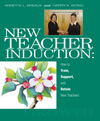



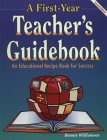
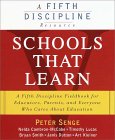

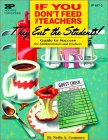
 Effective
Teaching...
Effective
Teaching...